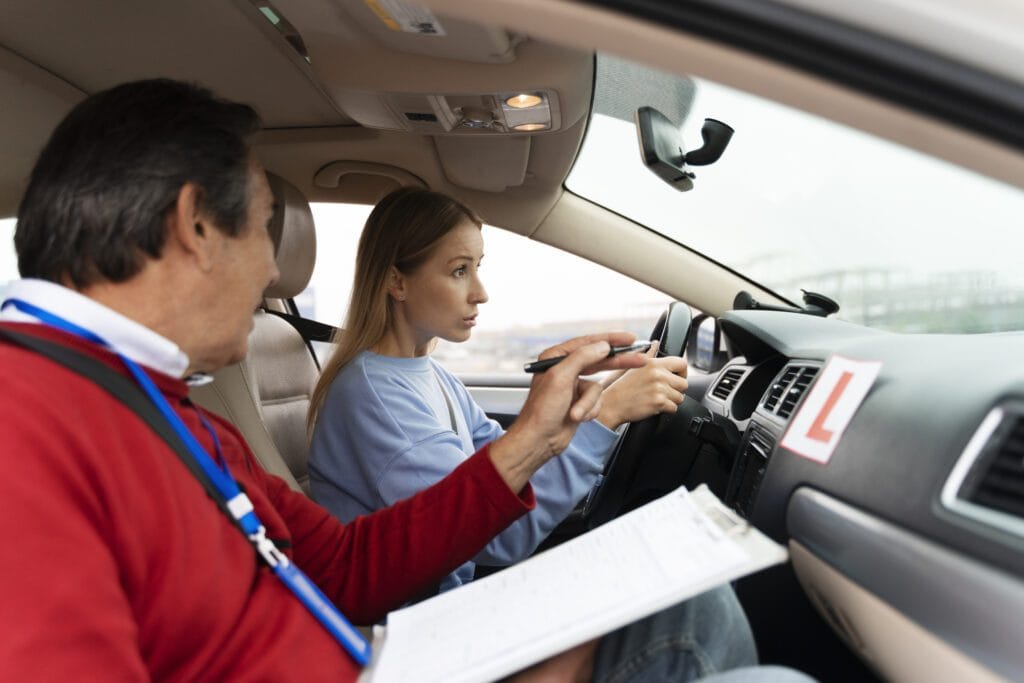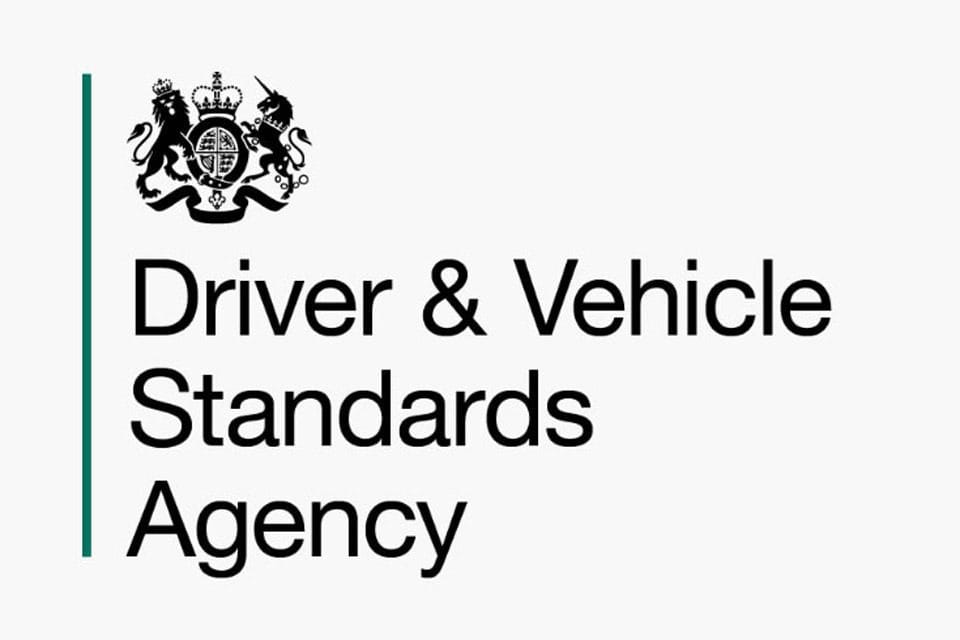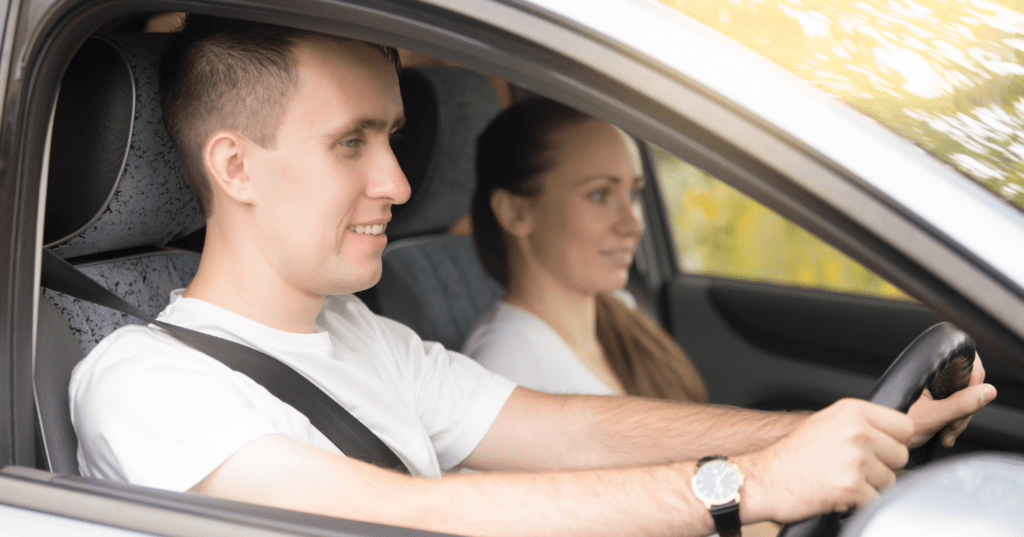
Navigating the process of learning to drive and passing your driving test in the UK can be daunting. Many aspiring drivers wonder about the optimal number of driving lessons they need to ensure success.
This comprehensive guide will delve into the UK driving test requirements, explore factors that influence the number of lessons required, and provide insights to help you prepare effectively for both the theory and practical components of the test.
Understanding the UK Driving Test Requirements
Overview of the UK Driving Test
The UK driving test is designed to assess a candidate’s ability to operate a vehicle safely and competently in various road and traffic conditions.
The Driver and Vehicle Standards Agency (DVSA) is responsible for setting and administering the standards for the test, which is structured in two main parts: the theory test and the practical test.
Passing both elements is mandatory to getting your full driver’s licence.
Key Components of the Practical Driving Test
The practical driving test takes about 40 minutes and examines a range of driving skills and behaviours. These include:
- General driving ability: Candidates must show that they can drive safely in different road and traffic conditions.
- Reversing manoeuvres: This could involve reversing into a parking bay, pulling up on the right-hand side of the road, reversing for two car lengths, and then re-joining the traffic.
- Independent driving: For about 20 minutes, the candidate will drive without turn-by-turn directions from the examiner, either following sat-nav directions or traffic signs.
- Vehicle safety questions: These are known as ‘show me, tell me‘ questions. The examiner will ask one ‘show me’ question, where the candidate has to demonstrate how to carry out a vehicle safety check, and one ‘tell me’ question where the candidate explains how they’d perform a check.
Understanding the Theory Test
The theory test is another crucial component and must be passed before the practical test can be booked. It consists of two parts:
- Multiple-choice questions: Covering topics such as road signs, highway code rules, and safe driving practices.
- Hazard perception test: A video test about spotting hazards on the road.
Both parts of the theory test are completed on a computer at one of the many test centres across the country.
Factors Influencing the Number of Driving Lessons Required
Individual Learning Pace
Every learner driver is unique, with different skills, abilities, and learning paces. While some may grasp driving concepts quickly, others may need more time to become comfortable behind the wheel.
An individual’s learning pace plays a significant role in determining the number of driving lessons they will need.
Previous Driving Experience
Those who have had prior experience driving, perhaps in another country, or who have practised privately alongside professional lessons, may require fewer lessons.
Previous driving experience can significantly reduce the learning curve, as these drivers are already familiar with vehicle control and road awareness.
Frequency of Driving Lessons
The frequency of driving lessons also affects how many lessons are ultimately needed. Intensive courses, where lessons are taken daily or several times a week, can lead to a faster learning process, as the information remains fresh and the skills are practised more consistently.
Conversely, spacing lessons too far apart may hinder progress and extend the time it takes to prepare for the test.
Average Number of Lessons for UK Learners
National Averages and Statistics
On average, UK learners take approximately 45 hours of professional driving lessons combined with about 20 hours of private practice to reach test standard.
However, these figures can vary significantly depending on individual circumstances. The Driver and Vehicle Standards Agency (DVSA) recommends that learners tailor their training based on personal progress rather than adhering strictly to averages.
It’s important for learners to remember that reaching the required standard for the driving test is more about skill competence and less about hitting a specific number of hours.
How Lesson Duration Affects Learning
The duration of each lesson can greatly influence how quickly and effectively a learner absorbs driving skills. Typically, lessons that last between one and two hours are most beneficial.
Shorter sessions may not provide enough time to cover all necessary material and practice manoeuvres, while longer sessions could lead to fatigue, reducing the overall effectiveness of the learning.
Balancing lesson duration is key to maximising learning without overwhelming the student.
Comparisons Between Intensive Courses and Regular Lessons
When comparing intensive courses with regular lessons, it’s clear that each has its advantages. Intensive courses, often lasting one to two weeks, are suitable for learners who need to pass their test quickly and can commit full-time to learning.
These courses are rigorous and demand high concentration but can significantly reduce the overall time to learn.
On the other hand, regular lessons spread over several weeks or months might better suit those who require more time to absorb driving skills gradually.
These learners benefit from processing and practising lessons over a longer period, which can enhance skill retention.
Choosing the Right Driving Instructor
Qualifications and Experience of Instructors
Choosing the right driving instructor is crucial and should start with verifying their qualifications and experience.
In the UK, driving instructors must be approved by the DVSA and display a green badge in their car window to signify that they are a fully qualified Approved Driving Instructor (ADI).
Potential learners should consider an instructor’s length of experience, pass rates, and professional development when making their choice.
Matching Teaching Styles to Learning Styles
The effectiveness of driving lessons can be greatly enhanced when the instructor’s teaching style matches the learner’s learning style.
Some learners might prefer a more visual or practical learning approach, while others might benefit from detailed verbal instructions and discussions.
It’s beneficial for learners to discuss their preferred learning methods with potential instructors to ensure a good fit that will support effective learning.
The Importance of Instructor Feedback
Instructor feedback is integral to a learner’s progress. A good driving instructor provides continuous feedback in a constructive manner, helping learners understand their strengths and areas for improvement.
Effective feedback not only helps in correcting mistakes but also builds confidence and helps the learner become a safer, more competent driver.
Regular, honest feedback can significantly influence a learner’s readiness for the driving test and overall driver safety.
By carefully considering these factors, learners can better navigate their path to becoming competent and confident drivers, tailored to their individual needs and circumstances.
Preparing for the Driving Test
Milestones to Reach Before the Test
Successfully passing the driving test requires achieving several milestones during the learning process. These milestones include:
- Mastering vehicle controls
- Understanding and applying road signs and regulations
- Developing hazard perception skills, and being able to perform manoeuvres with confidence and accuracy.
It’s essential that learners reach a level where they can drive independently without guidance, demonstrating safe and confident decision-making across various traffic situations.
Importance of Practice Outside of Lessons
Practising driving outside of professional lessons is critical in reinforcing what is learned during formal sessions. This practice outside of lessons allows learners to consolidate their skills and build confidence in a real-world environment.
It is recommended that learners supplement their professional instruction with private practice, ideally with a qualified supervisor such as a family member or friend who holds a full driving licence.
Mock Tests – An Essential Tool
Mock tests are a valuable tool in preparing for the actual driving test. Conducted by a driving instructor, these simulations provide a realistic test experience, allowing the learner to adapt to the pressure of being assessed.
Mock tests help identify areas of strength and weakness, providing both the learner and instructor with insights on what areas need more focus.
Regular mock tests can significantly increase a learner’s confidence and readiness for the test day.
Cost Considerations
Budgeting for Driving Lessons
Budgeting for driving lessons is an important consideration for most learners. The cost of driving lessons can vary widely depending on the location, the experience of the instructor, and the type of lesson package purchased.
Learners should anticipate and plan financially for the number of lessons they might need, considering the average guidance of around 45 hours of professional training, alongside additional costs such as the theory and practical test fees.
Cost vs. Quality of Instruction
While budget is an important factor, learners should also consider the cost vs. quality of instruction. Opting for the cheapest option might not always be beneficial if it compromises the quality of tuition.
A more experienced and highly recommended instructor might charge more but could potentially reduce the total number of lessons needed due to more effective teaching strategies and a deeper understanding of examiners’ requirements.
Financial Planning for Additional Lessons if Needed
It is wise to plan financially for the possibility of additional lessons if needed. Not all learners pass their driving test on the first attempt; many find that they need extra lessons to master certain skills or to regain confidence after a failed test attempt.
Setting aside a budget for additional lessons will ensure that learners can continue their education without interruption, aiming for success in subsequent test attempts.
By addressing these aspects of preparation and cost management, learners can approach their driving test with greater assurance and readiness, optimised for both performance and financial investment.
Tips for Reducing the Number of Driving Lessons Needed
Effective Practice Techniques
To reduce the number of professional lessons needed, learners should employ effective practice techniques. This involves a strategic approach to practising driving skills, focusing on areas that are particularly challenging.
Techniques such as targeted practice on specific manoeuvres, driving in various weather conditions, and navigating different types of roads can expedite the learning process.
Additionally, using dual-control cars during private practice sessions can provide a safer environment to practice new skills intensively.
Learning from Mistakes
Learning from mistakes is crucial in driving as much as in any other learning process. Each driving lesson presents opportunities to identify and rectify errors, which is essential for improvement and confidence building.
Learners should encourage feedback from their instructors and ask detailed questions about their mistakes to understand how to avoid them in the future.
Reflecting on and discussing these mistakes can transform them into valuable learning experiences, potentially reducing the number of lessons required by enhancing the efficiency of each lesson.
Staying Consistent with Lessons
Staying consistent with lessons is another effective strategy to reduce the total number of sessions needed. Arranging lessons regularly—ideally weekly or more frequently—helps maintain and build upon the skills learned in previous lessons.
This consistency reduces the time spent on recapping prior lessons, allowing more time for advancing skills and covering new content.
Regular exposure to driving also helps in retaining muscle memory and decision-making skills, which are crucial for passing the driving test.
By implementing these strategies, learners can potentially decrease the number of driving lessons they require, making the process more time-efficient and cost-effective.
Each of these tips aims to enhance the learning experience, making each driving lesson as productive as possible.
Frequently asked questions
You can start driving lessons when you are 17 years old. However, you can apply for your provisional licence up to three months before your 17th birthday.
On average, most learners take around 45 hours of professional lessons combined with approximately 20 hours of private practice.
However, this can vary significantly depending on individual learning rates and prior driving experience.
The theory test is a computer-based test consisting of multiple-choice questions and a hazard perception section.
You can prepare for it by studying the Highway Code, using practice books, apps, and taking mock tests available online.
Yes, you can practise in your own car provided you are accompanied by a qualified driver who is at least 21 years old and has held their full driving licence for a minimum of three years. Also, make sure you’re properly insured to drive the vehicle.
If you fail your driving test, consider the feedback given by the examiner to understand where you need improvement.
Book more lessons focusing on these areas before retaking the test. There is a mandatory waiting period of 10 working days before you can take another driving test.
Choose a driving instructor who is a DVSA-approved Approved Driving Instructor (ADI).
Look for good reviews and recommendations. It’s also important to choose someone whose teaching style matches your learning style.
The practical driving test lasts about 40 minutes and includes an eyesight check, ‘show me, tell me‘ vehicle safety questions, general driving ability, reversing manoeuvres, and independent driving. You must demonstrate safe and competent driving throughout the test.
Costs can vary widely, but on average, professional driving lessons cost between £25 and £50 per hour. You will also need to budget for the theory test and practical test fees, as well as any additional learning materials or private practice insurance.
Yes, you can choose to learn in either a manual or an automatic car. If you pass your test in an automatic car, you will only be licensed to drive automatic vehicles. If you pass in a manual car, you can drive both types of vehicles.
Intensive driving courses are designed to teach you to drive in a very short period, usually within one or two weeks.
These can be effective for quick learners or those who need to pass their test rapidly. However, they may not suit everyone, as the pace can be very fast and demanding.







